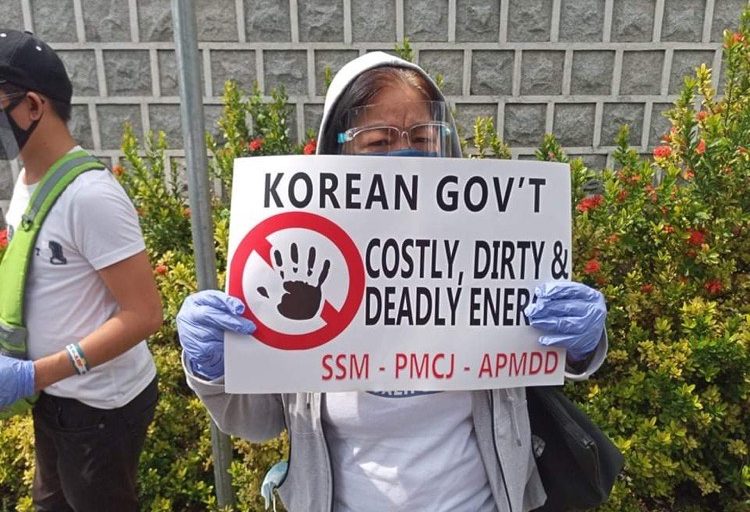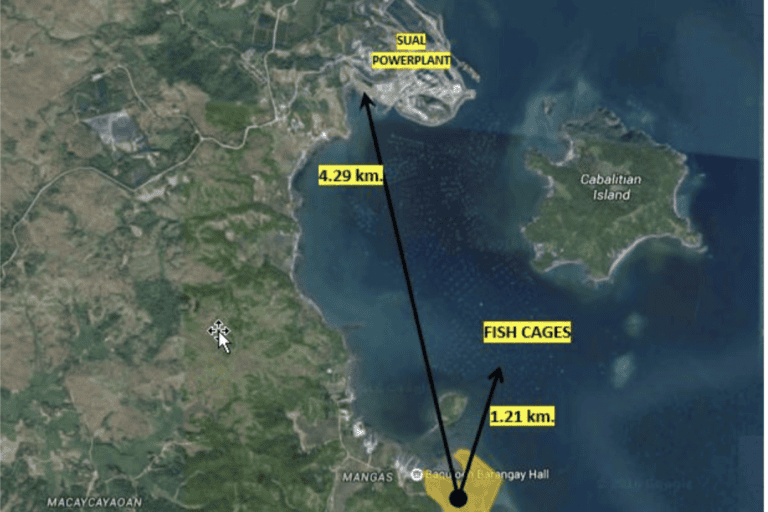- State-run Korea Electric Power Corporation (KEPCO) has announced it will either scrap or convert two overseas coal-fired power plant projects following a state audit.
- This comes after KEPCO was criticized for financing controversial coal plants in Indonesia and Vietnam despite the South Korean government’s own stated aim of divesting from the fossil fuel.
- The decision puts in limbo the construction of Sual 2, a 1,000-megawatt plant in the Philippines whose construction has been delayed due to community opposition.
- Sual 2 was expected to replace an existing coal-fired power plant scheduled for decommissioning in 2024 and blamed for a high incidence of respiratory ailments and contaminated water in the community.
MANILA — State-run Korea Electric Power Corporation (KEPCO) will be cleaning up its widely criticized overseas coal energy investments, putting in limbo two projects in the pipeline in the Philippines and South Africa.
In a state audit on Oct. 15, KEPCO president Kim Jong-gap said the company will finance two existing projects: the Jawa 9 and 10 plants in Indonesia, which were approved in June; and the Vung Ang 2 plant in Vietnam, which the board approved in early October.
“Out of the four [overseas coal power plants] projects, we decided to go ahead with two, and transition the other two to gas or cancel them at this point,” Kim said. “KEPCO and its subsidiaries will not be pursuing new overseas coal power projects.”
The statement effectively halts the construction of two projects, the 1,000-megawatt (MW) Sual 2 plant in the Philippines and the 630 MW Thabametsi plant in South Africa, groups said.
Sual 2 in Pangasinan province is among KEPCO’s four overseas coal-fired power plant projects that have met international criticism for contradicting the Korean Green New Deal, a government plan to spend fiscal stimulus on renewable and clean energy technologies and prohibit state coal investments, both local and overseas.

South Korea has invested about $10 billion in overseas coal power projects since 2008, making it one of the top three public financiers of coal. Global investors including BlackRock, Legal & General Investment Management, APG, and the Church Commissioners for England have warned KEPCO to drop overseas coal power projects, citing financial and environmental concerns.
Groups regard KEPCO’s declaration as a victory for the community. But with no specific decision on Sual 2, things could still go the other way, they said.
“We hope that this is not a false promise and that KEPCO will soon make an explicit statement that it is withdrawing from the Sual 2 project,” Ian Rivera of the Philippine Movement for Climate Justice (PMCJ) said in a statement. “The coal-fired power projects [South Korea] has supported through its financing institutions are locking developing countries into decades of fossil fuel infrastructure they can’t afford. The climate impacts of these projects fall most heavily on the poor.”
While the announcement comes as a relief for residents of Sual and regional anti-coal groups, KEPCO has yet to formally decide on the fate of the Sual plant, which is in the preparatory stages.
“There is uncertainty in the plant … Residents are not sure if it will continue or not,” Rosanna Soriano, president of the anti-coal group Save Sual Movement (SSM), told Mongabay. “We haven’t seen any construction permits but we’re told that the wharf is being constructed and piping has started. We can’t enter to check the area because it’s guarded.”

On the same day as KEPCO’s announcement, Soriano visited Bacquioen, the community in Sual where the power plant project is located, 235 kilometers (146 miles) northwest of Manila. Local media reported that residents acquiesced to the Sual 2 power station, selling private lands to pave the way for the plant’s construction.
The COVID-19 pandemic has limited activists’ engagement with the community, Soriano said, making it hard to gauge residents’ true sentiments. Sual Mayor Liseldo Caluga had earlier said residents were clamoring for the plant.
“What we learned is that the properties that were bought off are those in the coastal areas, where illegal settlers live,” Soriano said. “But on the site of the plant itself, no buyouts have happened. It’s not true that the community has been clamoring for this project.”
Sual has since 1999 hosted a 1,200 MW power station, the largest coal-fired plant in Luzon, the main island that makes up the northern part of the Philippines. That plant, Sual 1, was scheduled to be decommissioned in 2024, with Sual 2, which was slated to go online by 2025, expected to fill the energy gap. Sual 1 is credited by many with powering the town’s development over the past two decades, boosting its annual average revenue to 380 million pesos ($7.85 million) in 2017 from 75 million pesos ($1.5 million) in 2001.
TeaM Energy, the plant’s operator, says Sual 1 is “the largest and most cost-effective coal-fired power station in the country.” But SSM has linked the plant’s operations to a rapid increase in lung-related diseases among residents. “We’re a small community yet we have numerous cases of lung cancer here,” Soriano said, adding that “some parents are surprised their children developed asthma when they don’t have a family history of the disease.”

A 2018 study by PMCJ showed that ash from the Sual 1 plant’s dump had entered the community’s waterways, posing “serious risk of contamination of food systems, as the water downstream is used for rice paddy irrigation and fish farm watering.”
Concentrations of chromium, manganese, boron and other chemicals in the water were found to exceed the safe limits set out in the Philippines’ Water Quality Guidelines and the U.S. Environmental Protection Agency. The study called for a thorough reassessment of the safety of the water.
The impacts on agricultural crops are palpable, Soriano said. Fruit tree yields are down, and upland root crops are blanketed with ash every morning. Fisherfolks have also reported a significant decline in their catches. “Among fisherfolks, they linked the diminishing daily catch to the coal plant. That’s the local discussions here … that back in the day, fisherfolks don’t need to go far to catch fish. Now the marine area has been compromised,” Soriano said.
It’s this anti-coal sentiment that propelled Caluga into the town’s mayorship in 2019, edging out long-reigning mayor Roberto Arcinue, a staunch supporter of Sual 1. During his electoral campaign, Caluga promised to phase out coal in the municipality and received support from anti-coal groups and residents, Soriano said. Since taking office, however, Caluga appears to have mellowed on his anti-coal promises; he has yet to issue a position on the coal project, Soriano said.
“The mayor of our neighboring municipality had issued a statement that it denounces Sual 2 but we still don’t have that here,” Soriano said. “The community remains opposed to the project.” Soriano added that fear of losing their jobs and the possible cancellation of basic infrastructure services have prevented many residents from vocally opposing the project for now.
Related stories:
Banner image of the 1,200-megawatt Sual power station in Sual, Pangasinan, Philippines. The coal-fired thermal station is the largest coal plant on the main island of Luzon and has been online since 1999. Image courtesy of TeaM Energy.
FEEDBACK: Use this form to send a message to the author of this post. If you want to post a public comment, you can do that at the bottom of the page.